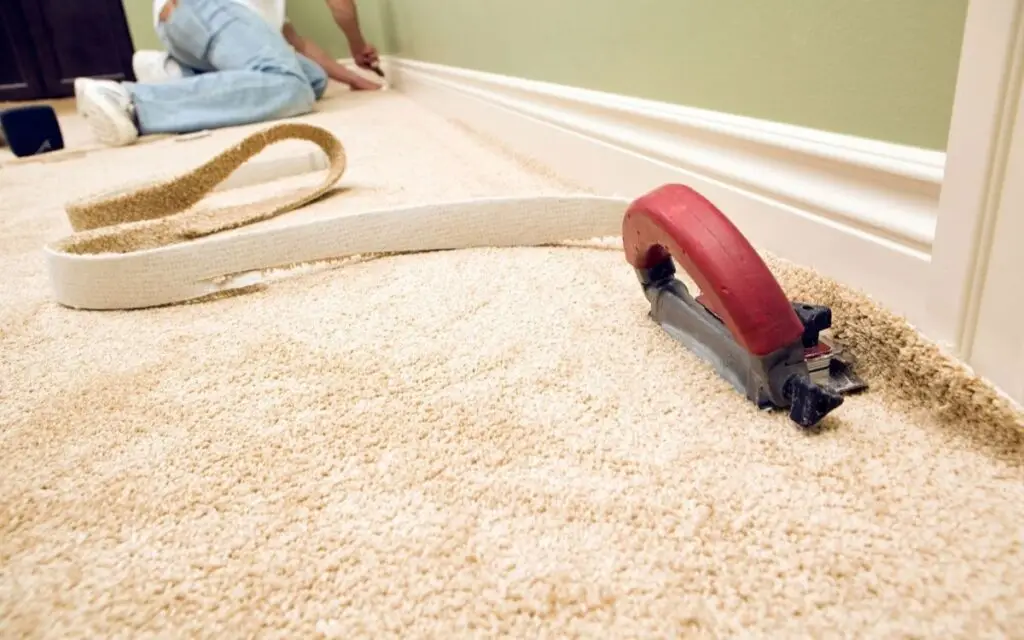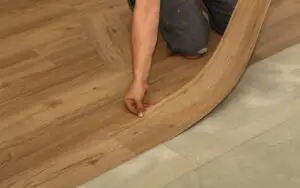Understanding the Role of Carpet Padding
What is Carpet Padding?
Materials and Types
Carpet padding, also known as carpet underlayment, is a layer of material that is installed between the subfloor and the carpet. It is typically made from foam, rubber, or fiber, and is available in a variety of thicknesses and densities. There are many different types of carpet padding that are designed for different purposes.
Functions
The primary functions of carpet padding include providing cushioning, insulation, sound absorption, and extending the lifespan of the carpet. It also provides a barrier against moisture, and helps to prevent mold and mildew growth. Carpet padding is essential to any carpet installation, and should always be properly selected based on your specific needs and budget.
Why Padding is Essential
Cushioning and Comfort
Carpet padding provides essential cushioning, and adds a layer of comfort underfoot, which makes the carpet more pleasant to walk on. Without padding, the carpet can feel hard and uncomfortable, especially on concrete subfloors. Padding is essential for maximizing the comfort of your new carpet, and also for improving the overall feel of your home.
Insulation
Carpet padding also provides insulation, helping to keep your home warmer in the winter, and cooler in the summer. This can lead to significant energy savings, and will also help to reduce your energy bills. The thickness and density of the padding will determine how much insulation is provided, and professional installers can help you choose the best type of padding for your specific climate.
Sound Absorption
Carpet padding also provides sound absorption, reducing noise transfer between floors, and also within a room. This is especially beneficial in multi-story homes, or apartment buildings, where noise can be a significant concern. If noise reduction is a high priority, there are specific types of padding that will maximize sound absorption.
Extends Carpet Lifespan
Carpet padding also helps to extend the lifespan of the carpet by protecting the carpet fibers from wear and tear. The padding provides a cushion that absorbs the impact of foot traffic, and helps to prevent the carpet from being crushed, or damaged, over time. This extra protection will help you to save money in the long run, and will also help your carpets look newer, for longer.
Consequences of Installing Carpet Without Padding
Reduced Comfort
Hard Surface
One of the most immediate consequences of installing carpet without padding, is a much harder surface. Without the cushioning of the padding, the carpet will feel thin and uncomfortable, especially on hard subfloors like concrete or tile. A hard floor can be very unpleasant to walk on, and can also reduce the enjoyment of your home.
Less Support
Without padding, the carpet will provide less support for your feet and joints, which can lead to fatigue, and discomfort, especially after standing for extended periods of time. Proper padding will help support your weight, and will reduce the strain on your body, which will create a more comfortable environment overall.
Decreased Lifespan
Accelerated Wear
Installing carpet without padding will greatly accelerate the wear and tear on the carpet fibers. Without the cushioning of the padding, the carpet fibers will be crushed by foot traffic, leading to premature matting, and a reduced lifespan. This will end up costing you more money, as you will need to replace the carpet much sooner than if it was properly installed with padding.
Damage to Carpet Fibers
The direct contact with the subfloor can also damage the carpet fibers, causing them to break down more quickly. This can lead to a worn and faded appearance, and can also reduce the carpet’s ability to resist stains, and moisture. This is an issue that can easily be avoided with proper padding, and will always be recommended by a professional installer.
Voided Warranty
Manufacturer Requirements
Most carpet manufacturers require the use of padding, and will void the warranty if it is not used. This means that if any issues arise with your carpet, that are normally covered by the warranty, they will not be covered, if you did not install it with the proper padding.
Installation Standards
Professional carpet installers also follow specific installation standards, which include the use of padding, and they may not be willing to install carpet without it. This is because they understand the importance of padding, and do not want to be responsible for any problems that may arise from an improper installation.
Potential Health and Safety Issues
Mold and Mildew Growth
Installing carpet without padding can increase the risk of mold, and mildew growth, especially in areas with high humidity, or moisture. Padding often has a moisture barrier that will help to prevent moisture from seeping into the carpet and padding, and without this protection, the carpet can become a breeding ground for mold, and mildew.
Allergen Accumulation
Without padding, the carpet can also accumulate more allergens, such as dust mites, pet dander, and pollen. These allergens can cause respiratory problems, and other health issues, especially for people with allergies, or asthma. Carpet padding provides another layer of protection from these types of allergens.
Choosing the Right Carpet Padding
Types of Padding
Foam
Foam padding is a popular and affordable option that provides good cushioning, and is available in a variety of densities. It is a great option for homeowners on a budget, and also for those who want a floor that is both comfortable and durable. However, foam padding may not be as durable as other types of padding, and may not be the best choice for high-traffic areas.
Rubber
Rubber padding is a more durable, and resilient option, that provides excellent support, and is also very resistant to moisture. It is a great choice for high-traffic areas, and basements, where moisture can be a concern. Rubber padding is typically more expensive than foam, but it will also last much longer, and provide better overall protection for your carpet.
Fiber
Fiber padding is made from recycled materials, such as jute, or synthetic fibers, and is a good option for those who are looking for an eco-friendly choice. Fiber padding is also very firm, and supportive, making it a good choice for people with back problems, or other joint issues. Professional installers are very familiar with all of these types of padding, and will help you choose the best option for your specific needs.
Factors to Consider
Thickness
The thickness of the padding is an important factor to consider, as it will affect the level of cushioning, and support, that the carpet provides. Thicker padding will provide more cushioning, but it can also make the carpet feel less stable. The best thickness will depend on the type of carpet you are installing, and your personal preferences.
Density
The density of the padding is another important factor, as it will affect its ability to withstand compression, and maintain its shape over time. Higher density padding will provide better support, and will be less likely to flatten out, under heavy foot traffic.
Intended Use
It is also important to consider the intended use of the room, when choosing the right carpet padding. High-traffic areas will require a more durable, and supportive padding, while bedrooms may only require a softer, more comfortable option.
Professional Carpet Installation and Padding
Benefits of Professional Installation
Proper Padding Selection
Professional carpet installers can help you choose the right padding for your specific needs, and budget, and will also ensure that it is properly installed. They are familiar with all of the different types of padding, and will always be able to select the best options for your floors, and your carpet.
Accurate Installation
Professional installers will also ensure that the carpet and padding are installed correctly, using the appropriate tools, and techniques. This will help to maximize the lifespan of your floors, and also to ensure that the finished project looks great, and provides you with peace of mind.
DIY vs Professional Carpet Installation
Challenges of DIY
DIY carpet installation can be challenging, especially when it comes to selecting the right padding, and using the correct installation techniques. Without the proper knowledge, and experience, it is very easy to make mistakes, that will damage the carpet, or reduce its lifespan.
Advantages of Professional Service
Hiring a professional service, will provide you with expertise, and experience, and will also ensure that your new floors are properly protected. Professional installers will also offer warranties, and guarantees, which will provide you with added peace of mind, and will protect your investment, for many years to come.
Case Studies: Padding vs No Padding
Example of a Worn-Out Carpet Without Padding
A homeowner attempted to save money, by installing carpet directly on a concrete subfloor, without padding. The carpet quickly became worn and matted, and it was also very uncomfortable to walk on. The homeowner regretted their decision, and had to replace the carpet much sooner than they had anticipated, which ended up costing them more money in the long run.
Example of Long-Lasting Carpet with Proper Padding
Another homeowner hired a professional installer, to install carpet with high-quality padding, in their living room. The floors were well maintained, and the padding provided excellent cushioning, and support. After many years, the carpet still looked great, and provided a comfortable and inviting space for the homeowner and their family.
FAQs & Answers
The primary purpose of carpet padding is to provide cushioning, insulation, sound absorption, and to extend the lifespan of your carpet. It is important for any type of carpet installation, as it protects the carpet fibers, and provides a comfortable surface to walk on. Professional installers will always recommend the proper padding, for each specific type of carpet, and they will ensure it is installed correctly for optimal performance.
The main risks associated with installing carpet directly on the subfloor, without any padding, include reduced comfort, decreased lifespan of the carpet, voided warranty, and potential health and safety issues. It will also be much more difficult to clean, which will further reduce the lifespan of the floor. Professional installers will always avoid these issues by using best practices, and by ensuring the proper padding is always installed.
The lack of carpet padding will greatly accelerate the wear and tear on the carpet fibers. Without the cushioning, the carpet fibers will be crushed by foot traffic, leading to premature matting, and a reduced lifespan. Professional installers will always know how to choose the right padding to protect your investment and increase the beauty and lifespan of your new floors.
Homeowners should always be aware that most carpet manufacturers require the use of padding, and will void the warranty if it is not used. This means that if any issues should arise with your carpet, that are normally covered by a warranty, that they will not be, and you will be responsible for the repairs. Professional installers always know how to ensure that your warranty will be fully protected.
Professional carpet installation services can help homeowners to choose the right padding by assessing their specific needs, and budget, while also helping them to understand which types of padding provide the best support, and protection, for each type of carpet. This expertise is invaluable, and it will also ensure that your new carpet will look great for many years to come.





